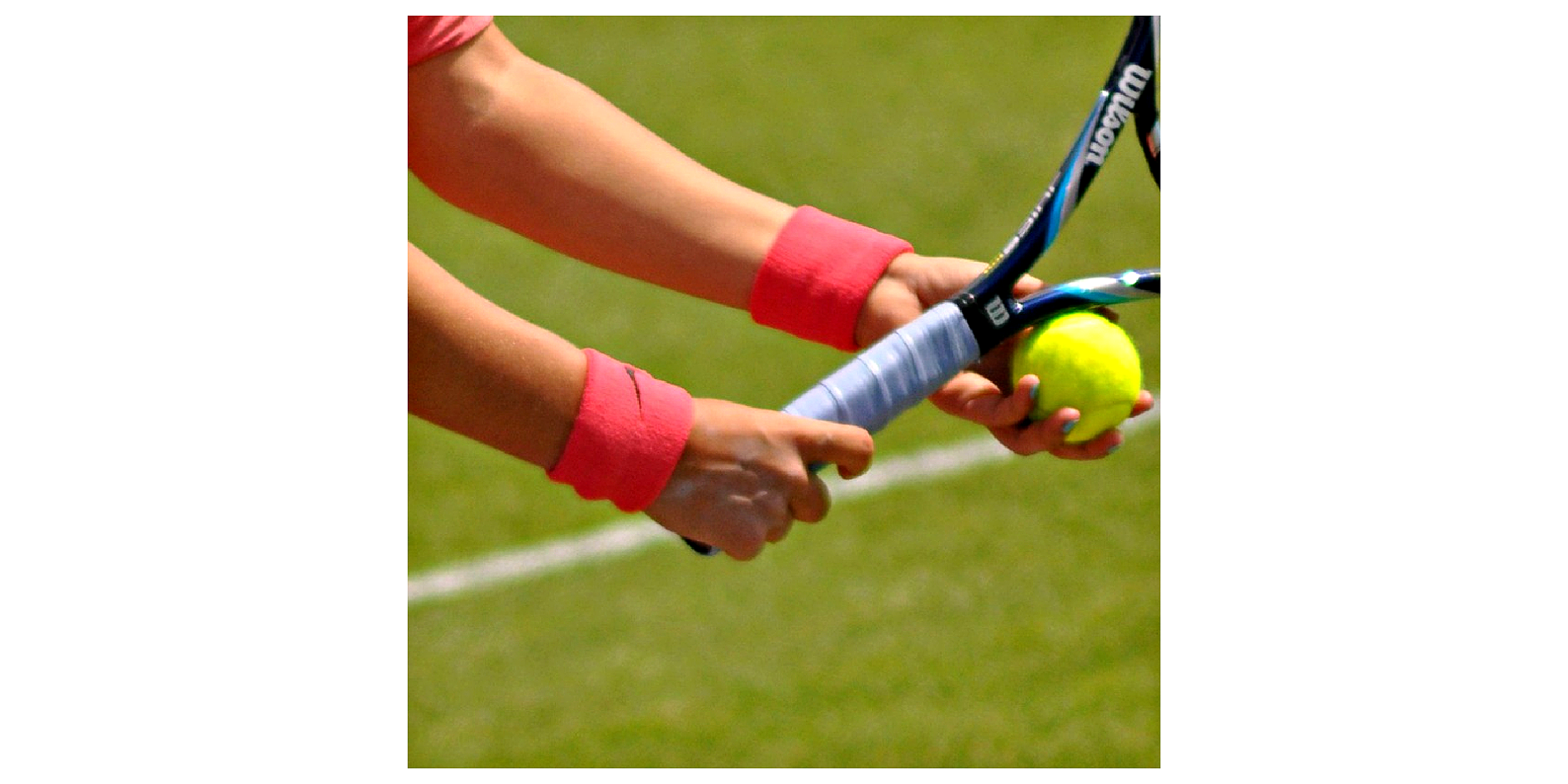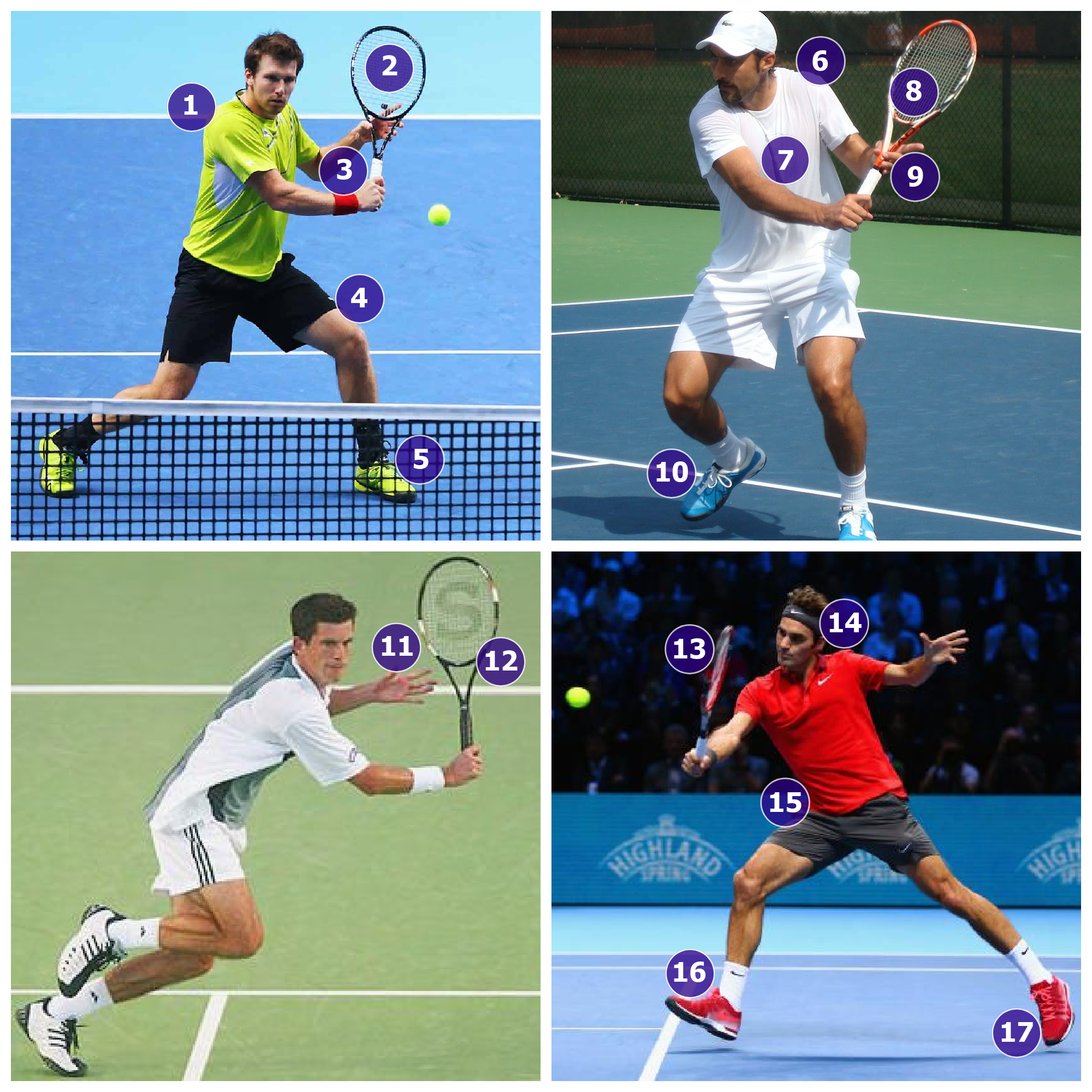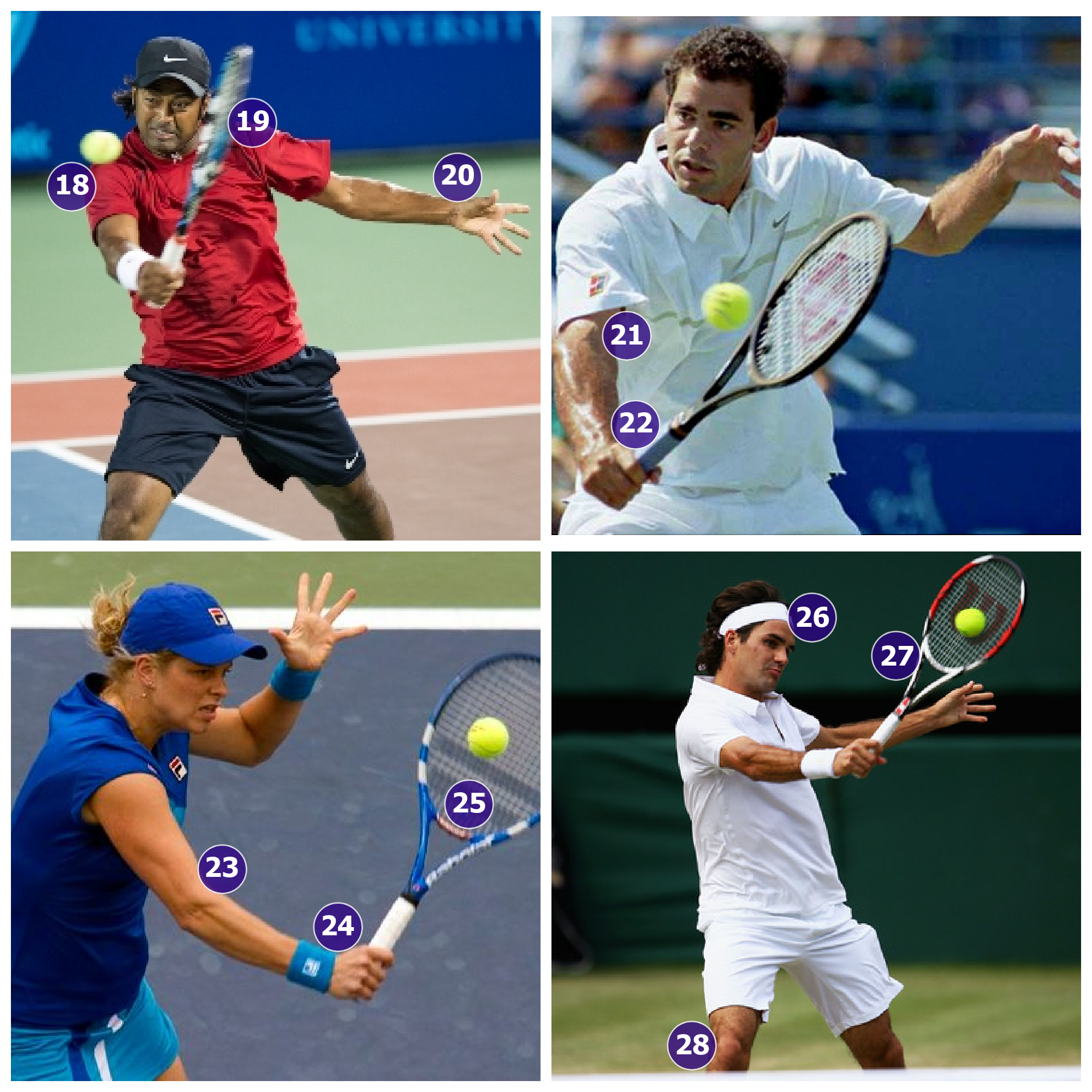
BACKHAND VOLLEY
Grip

Collapsible content
Continental Grip
- Used for Backhand Volley
Backswing

Collapsible content
Backswing Details...
1. Shoulder begins to reach the arm and racket across the body. The amount of shoulder turn depends on the distance of the ball.
2. Racket head up as shoulder opens up. Racket head stays above the hand during stroke.
3. Wrist tilts the racket head up, creating an "L" position.
4. Load up weight onto left knee, ready to explode into step.
5. Feet shift allowing the body to turn.
6. Left shoulder starts turning as upper body turns sideways.
7. Arm lays across body but never reaches behind the body.
8. Racket head lays back slightly, never going behind the body, except on a high, slow floater.
9. Left hand holds the throat of the racket for stability.
10. Right foot begins lifting into step.
11. Left hand releases the throat and begins to reach backward.
12. Racket head is always held firmly above the ball as it moves high to low into the contact point.
13. Contact point is always in front of the body.
14. Head remains still throughout stroke.
15. The body must stay at the level of the ball. The height of the stance depends on the height of the ball.
16. Right leg takes big step into ball. The direction of the step depends on the location of the ball.
17. Left foot strongly pushes off the ground into the stroke.
Contact Point

Collapsible content
Contact Point Details...
18. The shoulder controls the shape of the swing as arm remains firm throughout.
19. The racket continues moving downward, through the ball, with slightly open strings for backspin.
20. Left hand reaches backward, turning the body sideways.
21. Arm remains firm and tight through the contact point.
22. Hand holds a firm grip at contact.
23. The bend of the elbow is determined by the distance of the ball.
24. Wrist remains tilted up in an "L" position throughout the contact point.
25. Racket head is always up above the hand and grip.
26. Head remains still with eyes on the ball
27. Contact point is always in front of the body.
28. Front knee is flexed as the body keeps moving through the contact point.
Follow Through

Collapsible content
Follow Through Details...
29. Right elbow remains bent in the same position through out the follow through.
30. The racket head continues forward into the follow through.
31. Body stays sideways throughout stroke.
32. The left hand reaches back, often for balance, and allows the body to stay sideways.
33. Wrist remains tilted up in an "L" position throughout the follow through.
34. Racket remains on the hitting side of the player for the entirety of the stroke, and never pulls across the body.
35. Left hip stays back, keeping the body sideways and preventing the racket from swinging across the body.
36. The racket head continues to naturally move downward in a very abbreviated follow through.
37. Weight lands on right foot after stroke.
38. Must stay in same stance, at the same height, depending on the height of the ball.
39. Strings continue to tilt up, giving the ball backspin.
40. Chest is now opening as player continues to move forward.
41. Hips open during and after the follow through.

